How to Attract Birds Into Your Garden: Food, Shelter & Water tips
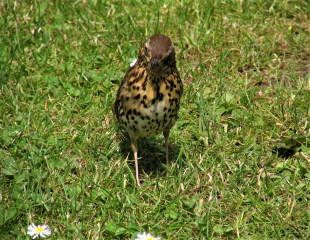
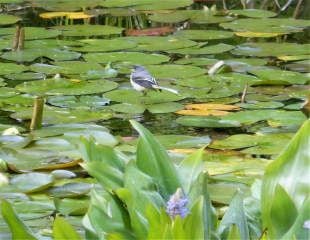
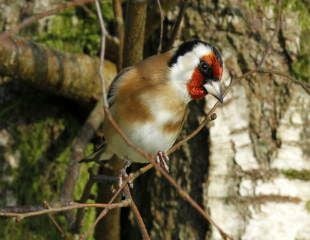
Why Birds visit your Garden
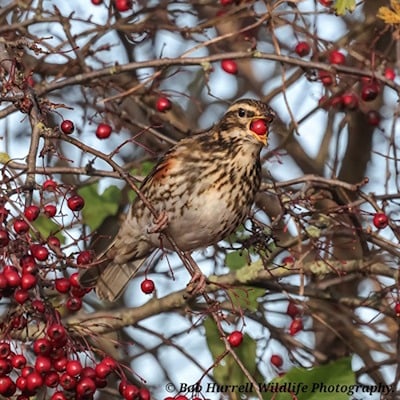
If you want to attract wild birds into your garden, you need to create a welcoming habitat for them, which includes food, water, shelter, nesting places, and cover. The key to encouraging more birds into your garden is not just bird feeders, although they have a role to play; it's the whole garden habitat, which includes berry-rich shrubs.
Bob Hurrell took this lovely image and it's reproduced here with his kind permission. You can see that the redwing is just loving feasting on the Hawthorn berries. There are lots of fantastic wildlife images on Bob's FB page link above.
Shrubs are essential to provide cover, nesting and berries, which are food. Flowering plants and wild areas draw in insects and pollinators, which are also food for birds. Most important is a water source. Bird baths are not simply garden ornaments. For months, I rented a property that had a small patio garden. At first, there were very few birds in the garden, but the addition of feeders and, importantly, a birdbath, made a huge difference. Lots of birds constantly visited the bird bath to drink and bathe.
Best Plants and Shrubs to Grow for birds
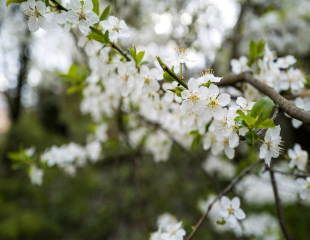
Native Hawthorn
Our native Hawthorn is a deciduous, flowering large shrub or tree commonly used for hedging. It supports an extensive number of insects providing food for blackbirds, thrushes, greenfinches and more. Its dense branches and leaves provide roosting for wrens, robins, blackbirds, song thrushes and hibernation for small mammals. Pruning can control hawthorns, and it makes an ideal hedge or part of a shrub collection. It is one of the best shrubs for attracting birds into your garden.

Cotoneaster
Birds love Cotoneaster berries. Cotoneasters are a wide range of shrubs and trees. Smaller varieties which are more garden friendly include C. amoenus, an evergreen variety around 2.5m; C.× suecicus 'Coral Beauty' low growing 2.m; C. franchetii semi evergreen 3-4m or if space is very limited, C. horizontalis, which as the name suggests is a low growing deciduous variety. Blackbirds, thrushes and waxwings will consume the berries.
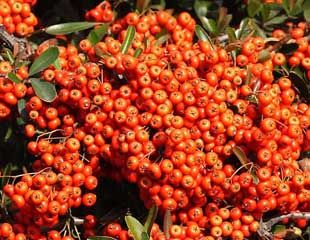
Pyracantha
Pyracantha is also big on berries, which are bright red or orange in the Autumn. Pyracantha is an evergreen shrub that has scented white flowers in the spring, followed by a profusion of berries.
The berries, especially sparrows and finches attract many birds. This trio of shrubs is friendly.
Most shrubs and trees that produce berries will be attractive to birds. In addition to the suggestions above, also bird-friendly are Rosa Rugosa, which has large hips in late summer and autumn, which birds enjoy. Holly, with its red berrie,s is another bird favourite. Also bird-friendly are rowan, whitebeam, guelder rose, elder, and ivy.
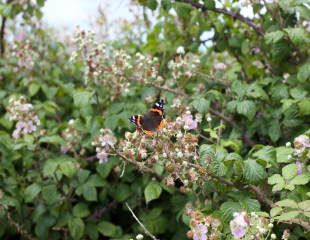
Grow Brambles
Although Brambles are regarded as a weed, just a few in a wild area are great for wildlife. They provide nectar enjoyed by an array of pollinators and insects.
Blackbirds, thrushes, starling, chaffinches and small mammals eat the fruits. The shrub also provides nesting for robins, wrens, thrushes, blackbirds and finches, an all-round wildlife-friendly plant to allow in the garden.

Teasel
Teasels are a self seeding biennial which have soft purple flowers in late summer, attractive to bees.
After flowering, the seed heads stay in place for weeks and are irresistible to goldfinches who feed on them.
Teasel is easy to grow from seed and vigorous. Once established, they will self-seed around the garden each year.
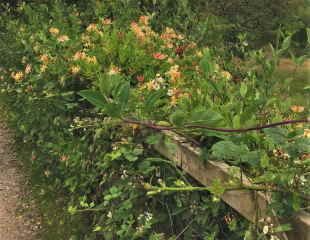
Honeysuckle
We know lonicera as honeysuckle, but its other common name is woodbine. It grows well in a semi wild woodland type setting in soil which is moist but well drained.
The wonderfully scented flowers attract a range of insects, which birds will feed on. Later in the autumn, when the berries appear, so too will bullfinches, warbles and thrushes.
Birds love Water sources

Water is huge attraction for birds. A simple bird bath, like the one in the image, will attract many birds into your garden.
The birds queue up to get into this birdbath. Blackbirds splash around, some birds drink and pigeons slump down in it and have a soak, usually with one wing in the air.
The most important thing about a birdbath to attract birds into the garden is to top up with clean water regularly. Keep the water clean and also periodically clean the bird bath. This is easily done using the hose spray to swill out any debris.
In the winter, water is very important to birds. This makes it all the more important unfreeze and break up any ice.
A garden pond is a great attraction to all wildlife, especially the birds. Here is some step-by-step advice on how to build a garden pond.
Shelter, Nesting and Habitat Elements
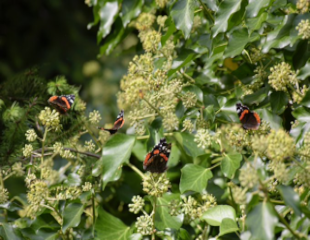
A wildlife-friendly area of shrubs creates a safe environment for birds, where they can feed and nest.
Other aspects of garden design that will attract birds into your garden include:
From a wildlife perspective, hedges are better than fences. I have suggestions for suitable hedging shrubs.
If you need to use fences, use "Green Cladding" which increases its wildlife score. This is simply planting climbing plants and suitable shrubs trained to cover the fences . Excellent forms of green cladding are Hedera Helix, the English Ivy. It is a wildlife magnet, especially as it matures and produces flowers and berries.
This form of ivy becomes dense enough to provide shelter to birds and for nest. It is home to dozens of invertebrates and pollinators. More information and growing tips about English Ivy. Pollinators and birds love Pyracantha, and you can train it up a fence.
Wild areas with long grasses and either native flowers or weeds. These attract insects, which will attract birds as they provide a source of food.
Nest boxes provide a safe home for birds to raise their young. What sort of nest boxes and where you put them in the garden is important, and the RSPB has an ultimate guide to nest boxes.
A wild area is always popular with the birds. It need not take over the garden, just a corner where nature is left to its own devices. Ideal to have in this area is longer grass, log piles as rotting wood accommodates insects, and some bird-friendly weeds and wild flowers.
If you are thinking of wilding your garden, check out how to create a wild garden.
Identify birds by their song. The excellent Merlin app is free from your app store. It's very reliable and packed full of useful bird information.
